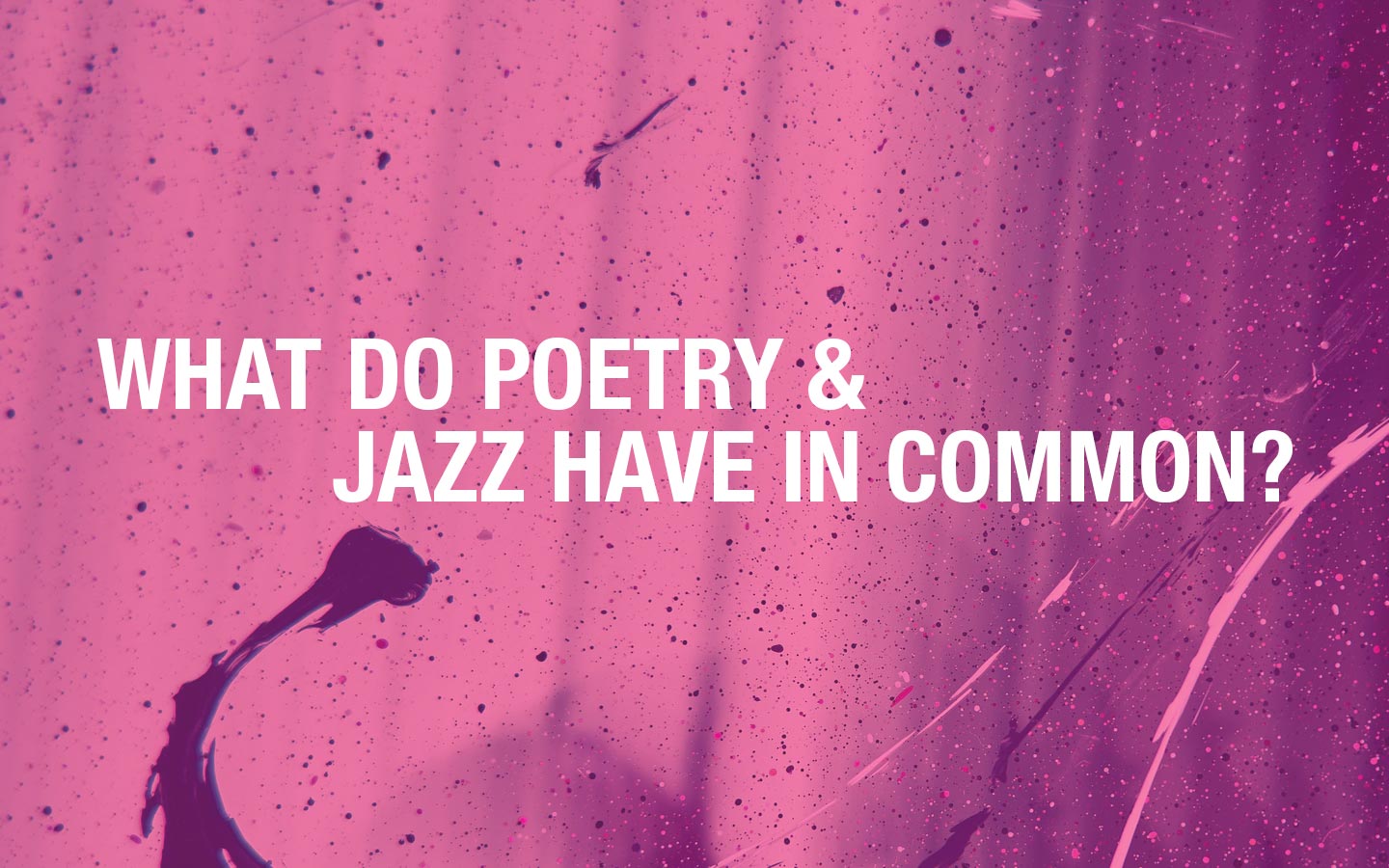What do Poetry and Jazz Have in Common?
In honor of World Poetry Day this Sunday, March 21st, we decided to explore the connections between these two art forms.
When you think about poetry, you probably think about nature and love, rhyme scheme and metaphor, rhythm and imagery. William Wordsworth, Robert Frost and Emily Dickinson. You probably think about the beautiful but perplexing language that takes a few reads to really sink in. Or maybe you think about those poems and stanzas that have changed your life—those words that are seared into your memory forever and those afternoons spent sprawling on a blanket in a park, taking turns reciting love poems with your sweetheart.
When you think about jazz music, you probably think of smooth saxophones, energetic pianos and moody lyrics. Sultry vocals, energetic horns and forceful rhythms. Louis Armstrong, Miles Davis, Ella Fitzgerald. Maybe you think about dancing and swinging at a jazz club (before the pandemic, of course), or relaxing after a stressful day, reclining in your favorite chair or soaking in a bubble bath and listening to some heartfelt tunes.
There are actually not many concrete differences between the two forms of artistic expression. While reading poetry is often a solitary activity and not something commonly done at a party, it still can be performed in public, at cafes and bars, like jazz. Although some poetry can be free verse, with no rhyme scheme or rhythm, about two-thirds involve a strong rhythm, like jazz. And both poetry and jazz enrich our understandings of the world by reaffirming our shared humanity through beauty, feelings and questions. Let’s take a more in-depth look at these similarities.
They both have origins in oral traditions
The earliest poetry is believed to have been sung, as a method of remembering important oral histories, genealogies and laws. The rhythmic and repetitious nature of poetry made it much easier to remember and retell long stories before writing became available. The earliest poetry actually existed in the form of chants and hymns and was considered a verbal art, not a literary art like it is today.
A signature component of jazz music is the call and response, which originates from Sub-Saharan African cultures. At public meetings, religious rituals and musical gatherings, the call and response served as a pattern of democratic participation and thus made its way, through enslaved Africans, to the 1920s African American jazz scene.
They both usually have strong rhythms
Poetry can be broken down into three main verses: formal, blank and free. Formal and blank both involve a strict meter, which is a pattern of stressed and unstressed syllables that determines the rhythm of the poem. Think of the iambic pentameter in the Shakespearean sonnets, such as “Shall I compare thee to a summer’s day?” The first word is unstressed, the second is stressed and so forth.
Jazz involves rhythms ranging from simple to complex that always include a basic underlying beat to which we tap our feet. Syncopation is the main rhythmic feature of jazz, which displaces beats or accents so that the stronger beats become weaker and vice versa. Sounds pretty familiar, doesn’t it…?
How poetry and jazz have come together
The similarities between poetry and jazz became apparent to poets like Langston Hughes during the Harlem Renaissance in the 1920s. Poets began writing poems that responded to and wrote about jazz music. They coined the term “jazz poetry,” which encompasses a range of forms, rhythms, sounds and improvisations. To give you a better idea of jazz poetry, here are a few lines from Hughes’s poem “The Weary Blues:” Droning a drowsy syncopated tune, / Rocking back and forth to a mellow croon. The popularity of jazz poetry continued throughout the Beat movement and the Black Arts Movement and is still alive today.
How Night is Alive is bringing poetry and jazz together
Many of the songs featured on the albums produced by Night is Alive include lyrics and rhythms that are quite poetic. On the newly released album, “Cryin’ In My Whiskey,” Janis Siegel and John Di Martino create a lovely rendition of Willie Nelson’s classic hit, “Always on My Mind.” The evocative lyrics rhyme beautifully: Girl I’m sorry I was blind / You were always on my mind.
“Cryin’ In My Whiskey” is available right now in our store. Check it out!
This post was written by Blog Editor, Jacqueline Knirnschild.

